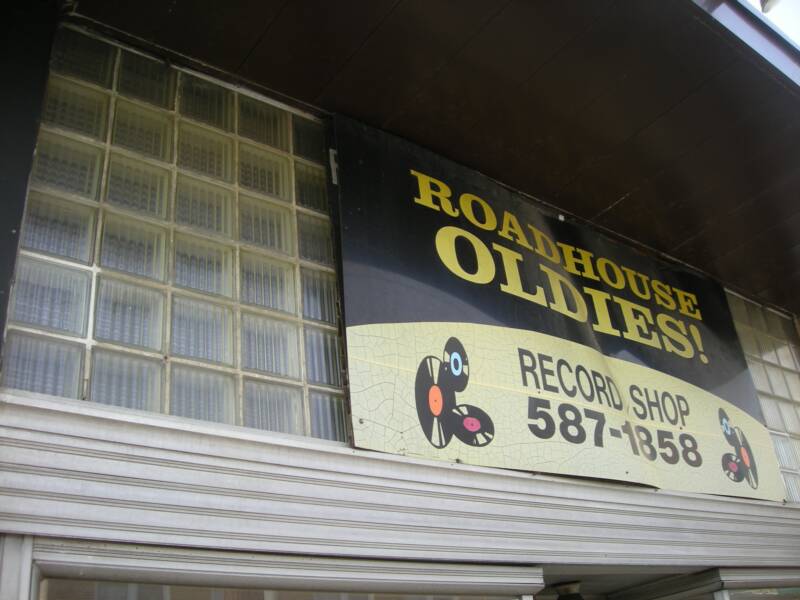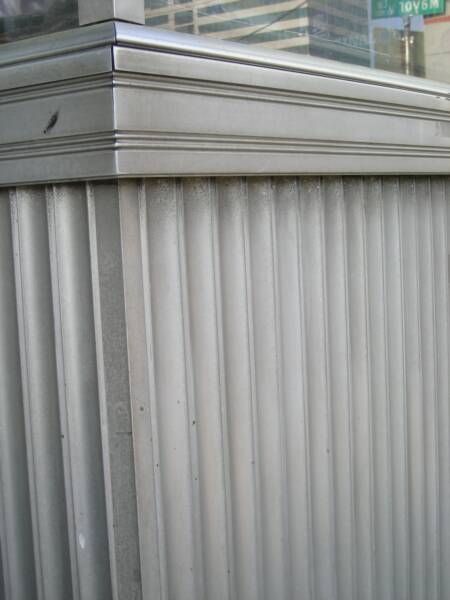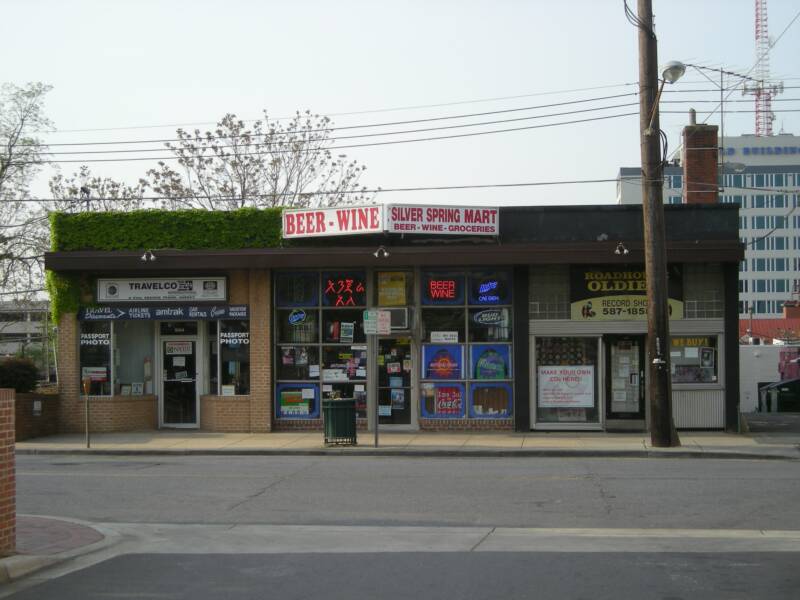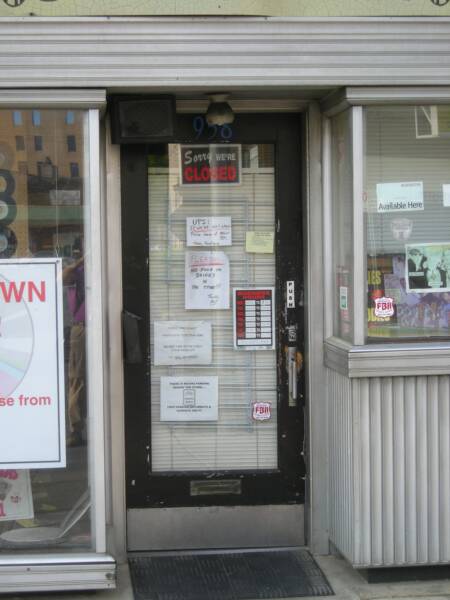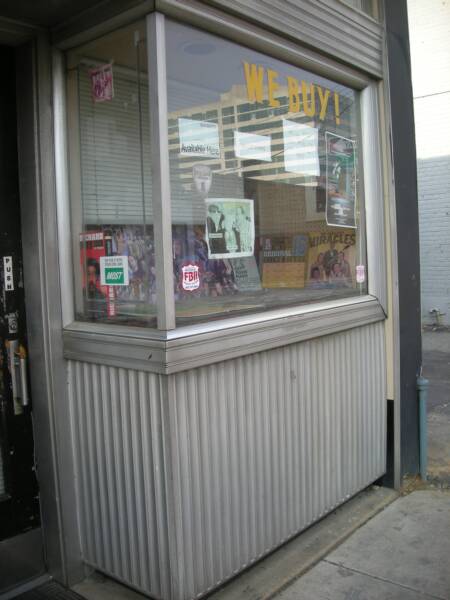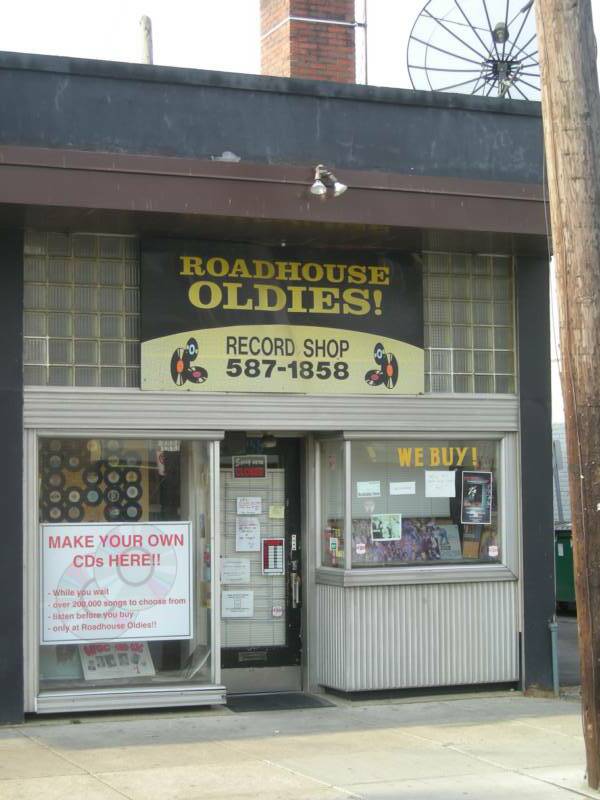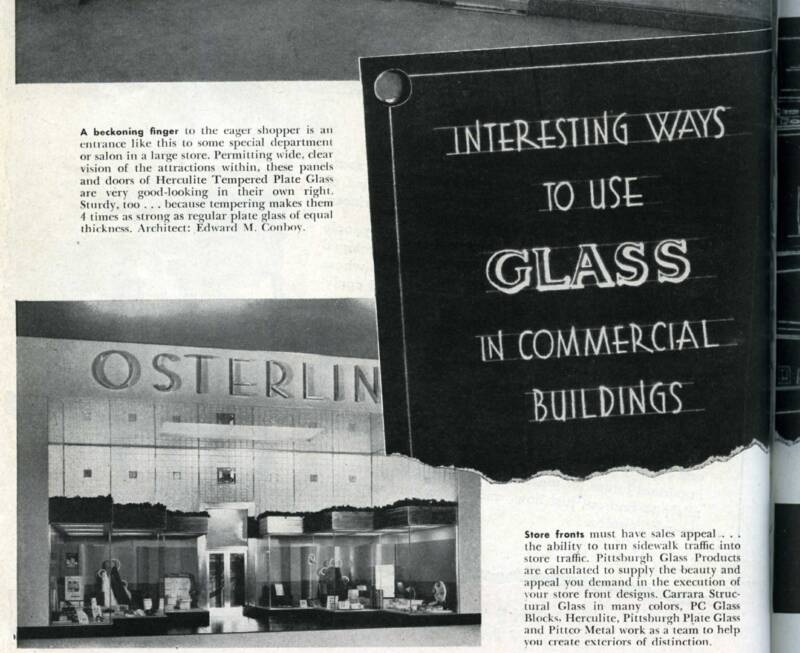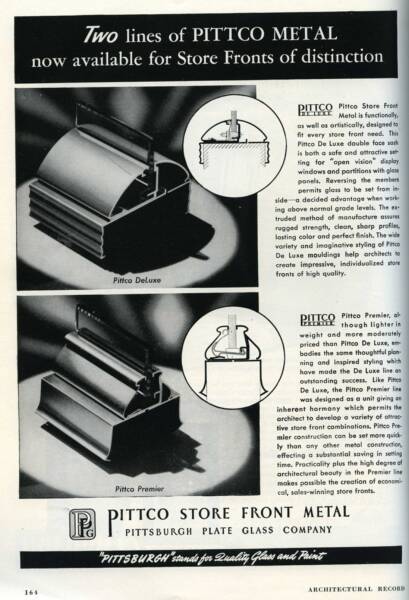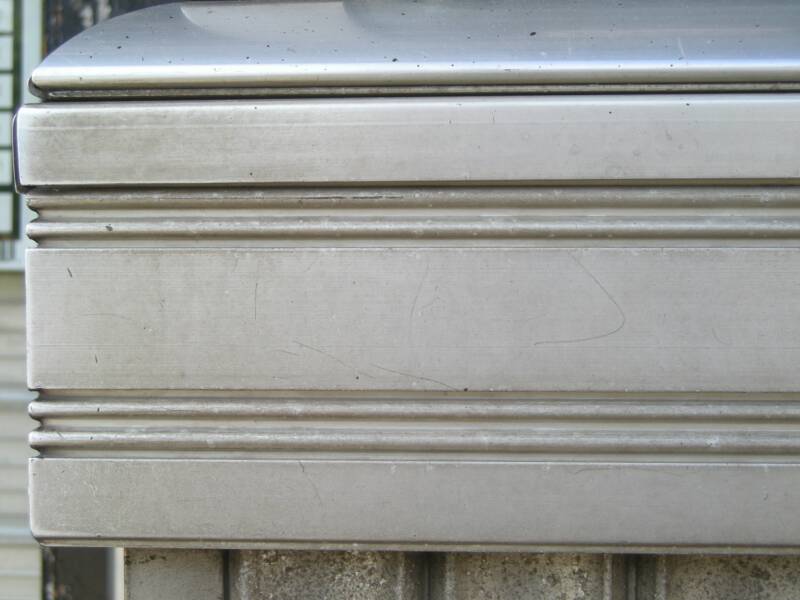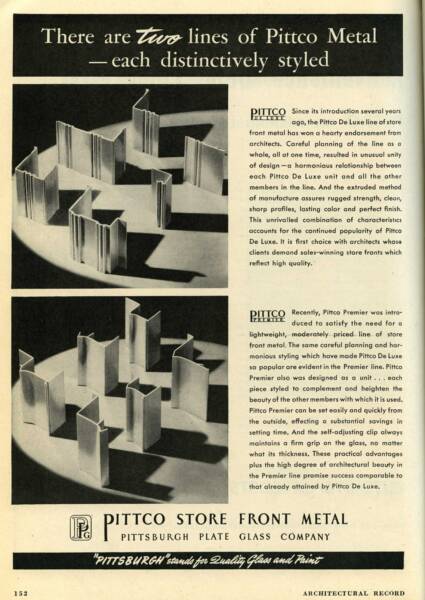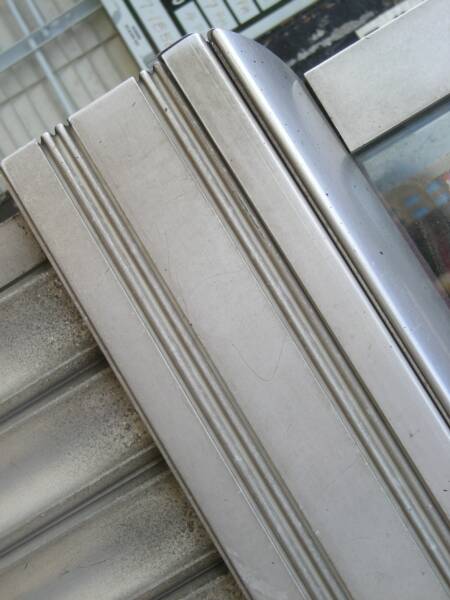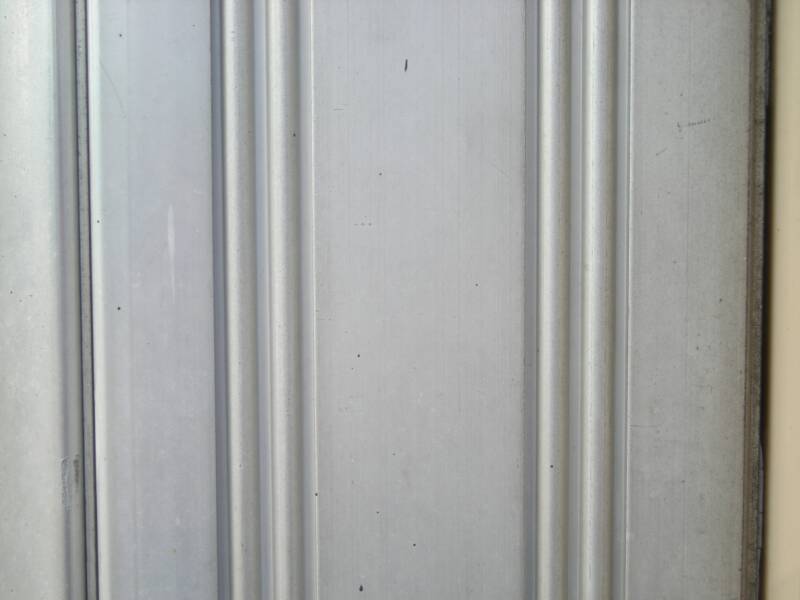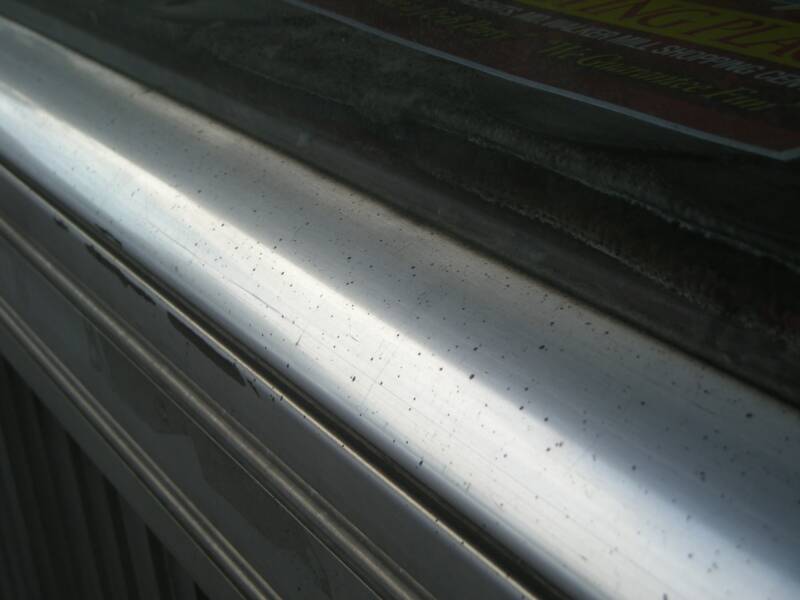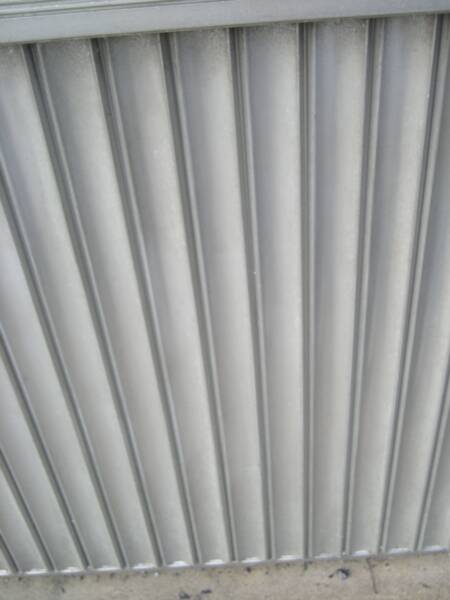By Jerry A. McCoy
For me the best part of conducting historical research is the serendipity of discovering a really interesting piece of information while looking for something completely unrelated. Such was the case recently while scanning through newspaper microfilm of the 1946 Silver Spring Standard. I was looking for stories about the opening of Tastee Diner that year when I came across “Silver Building Gleams in Glass At the Busy Bonifant Corner” on the front page of the April 19th issue.
The article was about the tenants occupying 8248 Georgia Avenue; a two-story commercial structure originally built in 1927 but, according to the article, newly remodeled and renamed the Silver Building. The building is no longer extant. Sometime around 1972 the structure was heavily damaged by fire and razed. Today the lot is occupied by a playground and parking lot owned by the Bethel World Outreach Ministries International.
One of the tenants of the Silver Building was “well-known businessman” August F. Kohlman, an optician and jeweler. Mr. Kohlman was occupying room number 200 but only temporarily while work was underway on his new shop at 922 Thayer Avenue that “was designed and is being erected under the supervision of the Pittsburgh Plate Glass Corporation.” As I read this I could literally feel my eyes open wide with excitement!
For years I’ve walked past 958 Thayer Avenue (originally numbered 922), the long time home of the landmark “oldies” record store Roadhouse Oldies, and I instinctively knew that there was something special about the store front’s architectural design. Featuring a center entrance flanked by two protruding glass display cases, the bulk of the façade is constructed of intricately cut and installed metal trim, molding, sash, and fluted panels.
Above the entrance and display cases, and extending the full width of the store front, is an expanse of opaque glass blocks. This light source easily takes up a third of the store front’s overall design before it is vertically cut short by a small projecting canopy.
What also makes the façade of 958 Thayer unique was my suspicion that it was the only “survivor” of what had probably been three identical store fronts, the other two with the addresses of 956 and 954 and located directly to the east. All three businesses are contained within a single structure built in 1946. At some time over the past six decades the owners of the other two businesses decided to “update” the look of their shops. This involved tearing out the original store fronts and replacing them with new glass windows set into brickwork.
Aware as I am of the architectural detailing of commercial buildings located in Silver Spring’s Central Business District, and knowing that there were no other structures similar to this design, I felt it prudent to set aside my original research on Tastee Diner and see what I could find out about the fabricator of the 958 Thayer Avenue façade.
The Pittsburgh Plate Glass Company was founded in 1883, oddly enough not in its namesake city but in Creighton, Pennsylvania, located twenty miles northeast on the Allegheny River. Known since 1968 as PPG Industries, Inc., the company today has 125 manufacturing facilities and subsidiaries around the world.
In 1936 the Pittsburgh Plate Glass Company, in an effort to promote wider use of its products, inaugurated a traveling exhibit of twelve architectural model store fronts featuring the latest developments in commercial design, construction, lighting, and color schemes. Meant to encourage retailers to modernize their establishments, these one-seventh scale models had their debut in New York City on September 8th of that year and went on a “caravan” tour of 75 cities in the United States.
Commenting on the exhibit, PPG Co. Representative Edward L. Patton stated, “…the final test of whether or not a store front is successful depends on whether or not it ‘pulls.’ Instance after instance may be cited where sales increases have followed or a new tenant secured that made the modernized property a worth-while investment” (“Improving Store Fronts: Demand Far Exceeds the Supply, Edward L. Patton Says,” New York Times, August 30, 1936). Three months later the caravan arrived in Washington, DC and set up in the display rooms of the Electric Institute, located in the Potomac Electric & Power Co. Building, 929 E Street, NW.
The following year Pittsburgh Plate Glass Co. published in 1937 Pittco Store Fronts: 12 Suggestions for Store Front Modernization. Pittco Store Front Metal was a subsidiary company of PPG Co. and produced the trim, molding, and sash materials that were utilized in these store fronts. Likewise another subsidiary, Pittsburgh Corning Glass Block, manufactured the glass block that was frequently incorporated into the store fronts.
Throughout the 1930s and ‘40s these three companies heavily advertised in the architectural trade journals of the time. A double page PPG Co. advertisement spread that appeared in the May 1944 Architectural Digest trumpeted “Interesting Ways to Use Glass in Commercial Buildings.”
A caption in this advertisement accompanying an illustration of a modern store front proclaimed, "Store fronts must have sales appeal...the ability to turn sidewalk traffic into store traffic. Pittsburgh Glass Products are calculated to supply the beauty and appeal you demand in the execution of your store front designs. Carrara Structural Glass in many colors, PC Glass Blocks, Herculite, Pittsburgh Plate Glass and Pittco Metal work as a team to help you create exteriors of distinction." The facade of 958 Thayer incorporates the latter three of these PPG Co. products.
Perhaps Mr. Kohlman learned of the availability of these ready-designed store fronts via any one of the many advertising venues and decided that should he ever have the opportunity to own his own ground-floor business, he would make sure it had a Pittsburgh Plate Glass store front.
The first listing for Kohlman’s Jewel Shop at 958 Thayer Avenue (phone SHephrd-7272) appeared in the September 1946 Washington Metropolitan Yellow Pages. Subsequent listings appeared in the June 1947 and March 1948 editions. The next business to occupy the address was Maternity Lane; “Smart Fashions for Every Occasion and Every Budget” touted an advertisement that appeared in the December 19, 1948 Washington Post).
Below is a list of subsequent businesses that occupied 958 Thayer Avenue (published years obtained from Polk’s Silver Spring City Directory):
1960 - Davis & Carmack Inc. (sound equipment).
1962 & 1964 – Deaner & Son (electronics).
1966 – Vacant.
1968 – Keyser-Deaver (audio electronics repair).
1969 & 1971 – Universal Tailoring Co. & Voula’s Dressmaking Studio.
1973 – Sam Lim’s Lighting Design Co.
By late 1974 the little store front whose façade never changed, only the businesses inside, saw the arrival of a tenant who must have liked the neighborhood because it is still there 34 years later…Roadhouse Oldies! Originally located at 946 Sligo Avenue, this establishment was started by then WGTB-FM radio jock Alan Lee and encyclopedic record collector Les Moskowitz. The record store originally specialized in 1950s rock ‘n’ roll and rhythm and blues recordings.
Still owned today by Lee with the assist of longtime manager and disc jockey Warren “Scooter” Magruder, Roadhouse Oldies has deservedly earned its reputation as a landmark Silver Spring small independent business. Today their stock encompasses 1950’s and ‘60s rock ‘n’ roll, doo-wop, Motown, and ‘70s and ‘80s soul music on 45s, LPs, CDs, DVDs, and cassettes. Its patronage extends far beyond the local community, having a national reputation for being able to procure hard-to-find collectible recordings. Unfortunately, Roadhouse Oldies’ current location with its original store front is endangered.
The owner of 954-56-58 Thayer has plans to raze the structure to construct an office and retail development project. Doing so will not only destroy this historic 1948 Pittsburgh Plate Glass Co. store front, but also displace Roadhouse Oldies along with the two other small independent businesses in the building, the Silver Spring Mart and TravelCo International.
While the Silver Spring Historical Society fervently hopes that the developer of this project will assist these business owners to remain in downtown Silver Spring, it is also our desire to see the developer preserve the store front of 958 Thayer Avenue, an effort that I have no doubt would prove to be incredibly newsworthy by the public at large.
The SSHS would like to suggest to the developer that this store front, including the current contents of its display cases and the Roadhouse Oldies sign, be systematically disassembled and reconstructed as a permanent exhibit in the new Silver Spring Library!
Imagine it. Patrons who visit the “Popular Library” area of the new library, where videos, music CDs, audio books, etc. will be housed, could walk past the Roadhouse Oldies store front in whose display cases reside the artifacts of a 20th century sound reproduction medium… 45 r.p.m. (revolutions per minute) and 33 1/3 r.p.m. LPs (“long” playing) record albums.
An entire generation has come of age never having played a record album on a turntable much less having seen either in person. What an incredible opportunity this installation would be to not only teach visiting library patrons about our society’s technological and architectural past but to also serve as a exhibit of Silver Spring’s history.
A similar historic preservation project has already been accomplished at Rockville’s new library, located at 21 Maryland Avenue. Installed in one of its meeting rooms is a complete 1914 marble soda fountain that at one time graced Vinson’s Drug Store, a popular Rockville business. Owned by Peerless Rockville, that city’s historic preservation organization, the soda fountain was never previously assembled and displayed because of lack of space. Now all can see, enjoy, and learn about Rockville’s past when visiting the library.
Why shouldn’t Silver Spring’s residents and visitors be able to readily do the same?
If you have any information/photographs on any of the individuals/places profiled in this article, please contact the Silver Spring Historical Society at PO Box 1160, Silver Spring, MD 20910-1160, email sshistory@yahoo.com, or call 301.537.1253. The society’s web site is www.sshistory.org. Silver Spring's heritage can only be preserved if you share it with us. Thank you!
